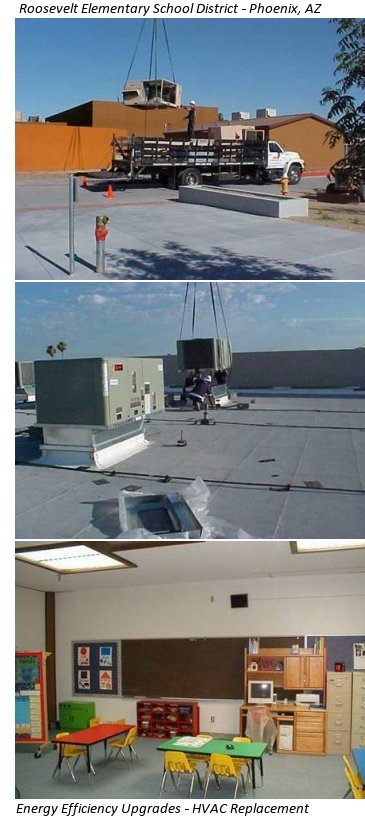The politics of energy and climate is heating up – both figuratively and literally.
While the public was focused on election returns on November 4, the Arizona Corporation Commission (ACC) staff must have been hoping that the media would ignore their surprise announcement vis-à-vis its proposed new rules to eliminate the state’s Energy Efficiency Standard. The standard, adopted unanimously in 2010, calls upon regulated utilities to reduce the electricity they sell 22 percent by 2020. A separate standard requires gas utilities to reduce gas sales by six percent over the same timeframe.
The timing notwithstanding, most were taken aback by the proposal. Compounding the bolt from the blue was the accompanying announcement that there would only be a 14-day period for the public to review and comment on this proposal.
Few things better illustrate how controversial the announcement was than the sarcastic comment from one newspaper columnist that “it didn’t take long” for the new commission to begin undoing years of progress in the state’s war on energy waste.

The proposed draft rules would effectively turn a decade of progress upside down.
Welcome to the new Corporation Commission’s War on Efficiency: a war against lower utility bills, a war against reducing climate altering carbon emissions, a war against saving water, and a war against jobs. The proposal can be summed up in three words – lack of leadership.
Adding insult to injury, the staff’s recommendation never defines the problem the new rules are trying to “correct.” The only hint at a rationale comes from a newspaper interview with outgoing Commissioner Gary Pierce, who offered nothing more than vague hand-waving that the programs are “not cost-effective,” and that the “low-hanging fruit has already been picked.”
Before the ACC decides to pull the plug on the state’s Energy Efficiency Standards, it might want to take a closer look at the real value they provide Arizonans.
Perhaps they could ask the nearly 500,000 APS customers who have participated in its efficiency programs. Or the hundred-thousand-plus TEP customers who have lowered their utility bills as a result of their utility’s efficiency programs.
They should talk to APS customer Clift Wegener of Avondale, who suffers from asthma. The Energy Efficiency Standard is one of the biggest weapons in the fight to alleviate the dirty air that causes respiratory problems for so many Arizonans like Mr. Wegener.
Perhaps they should ask the thousands of Arizona businesses that have replaced inefficient lighting and equipment with the help of utility rebates, thus making the cost of doing business in Arizona more affordable.
Maybe a sit-down with small business owners like Jennifer Kassmussen (Aunt Jenny’s Remedies in Cave Creek) or Greg Raskin (Raskin’s Jewelers in Prescott) would provide insight into how Arizona entrepreneurs struggle to keep afloat and how high utility bills can wreak havoc on their profits. More effective energy use is one of the keys to their survival.
Or maybe they should inquire as to how the Arizona taxpayers will feel about terminating a program that benefits our schools and has helped put more of their annual “contributions” directly into the classroom, rather than to pay for energy costs?
Any number of examples could be scrutinized to show the cost effectiveness and the societal benefits of the utilities' efficiency programs, but none more far-reaching than the impact on our schools. Schools have leveraged utility incentives with private capital through the energy performance contracting approach in order to implement deep-facility energy retrofits that, unlike low-bid contracting, reward long-term performance. This whole-building approach to energy retrofits not only mutes Commissioner Pierce’s “low-hanging fruit” argument, but it also eliminates his concern over the cost-effectiveness, as all the projects are designed to pay for themselves from the cost savings.
What’s more, this approach creates three to four times as many jobs as the traditional approach to energy retrofits.
In these days of shrinking budgets, Arizona schools have used the utility incentives and the performance contracting model to lower their utility bills by more than $7 million a year since 2010. Yet we have only scratched the surface of what is possible in the K-12 market sector.
There are more than 2000 public schools in Arizona and less than 10 percent have initiated a deep-facility energy retrofit project. The continuation of the Energy Efficiency Standards and the programs and incentives they provide will pay huge dividends for our schools, taxpayers, students, our economy, and our climate in the years to come.
Just ask officials at Mesa Unified School District about their HVAC upgrades in six schools at a total cost of $1.13 million (before incentives). The energy improvements are saving more than $250,000 a year and have reduced the schools’ associated greenhouse gas emissions (GHG) by more than 1200 metric tons per year.
Or ask Dysart Unified School District officials, who implemented lighting upgrades, lighting controls, HVAC upgrades, motors and solar hot water projects in 23 schools throughout the district. The $5.1 million energy improvement project is saving the district more than $1 million a year in energy costs. The schools’ GHG emission reductions exceed 5,400 metric tons annually as a result of these energy efficiency improvements.
The list goes on and includes schools in every part of the state. It is a story that can be replicated in other schools and public facilities across the state. But not if some of the keys to unlocking this market potential – the Energy Efficiency Standards – are eliminated.
Hopefully the new commission will see this “energy efficient light,” as it were, and stay the course. That would be real leadership and the kind Arizona needs from its elected officials.
Jim Arwood
Communications Director
Arizona Solar Center
Questions:
Commissioners are questioning the cost-effectiveness of utility energy efficiency programs. In light of this criticism, should ratepayer funds to implement energy efficiency and solar programs continue to be administered by utilities? Or should the ratepayer funds collected through surcharges be administered by an independent third-party organization?
